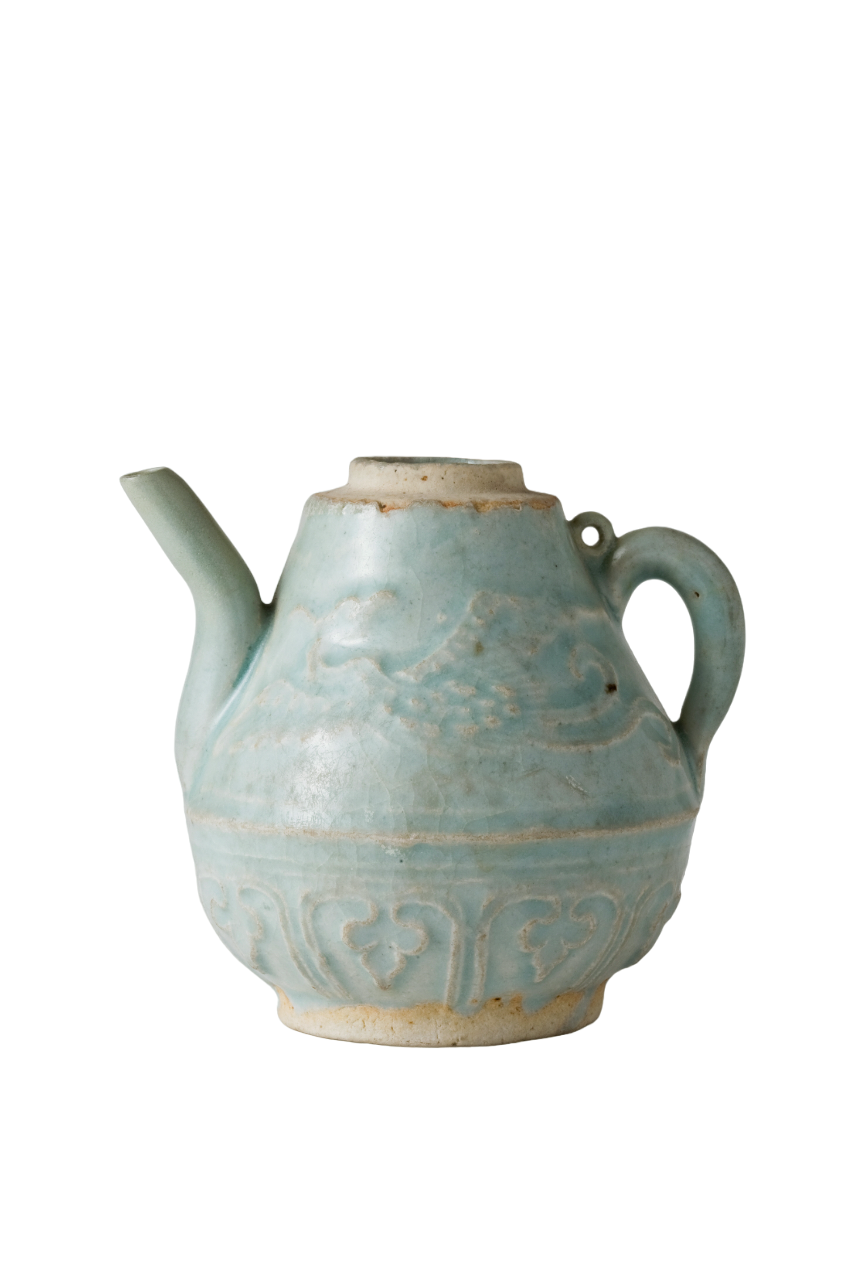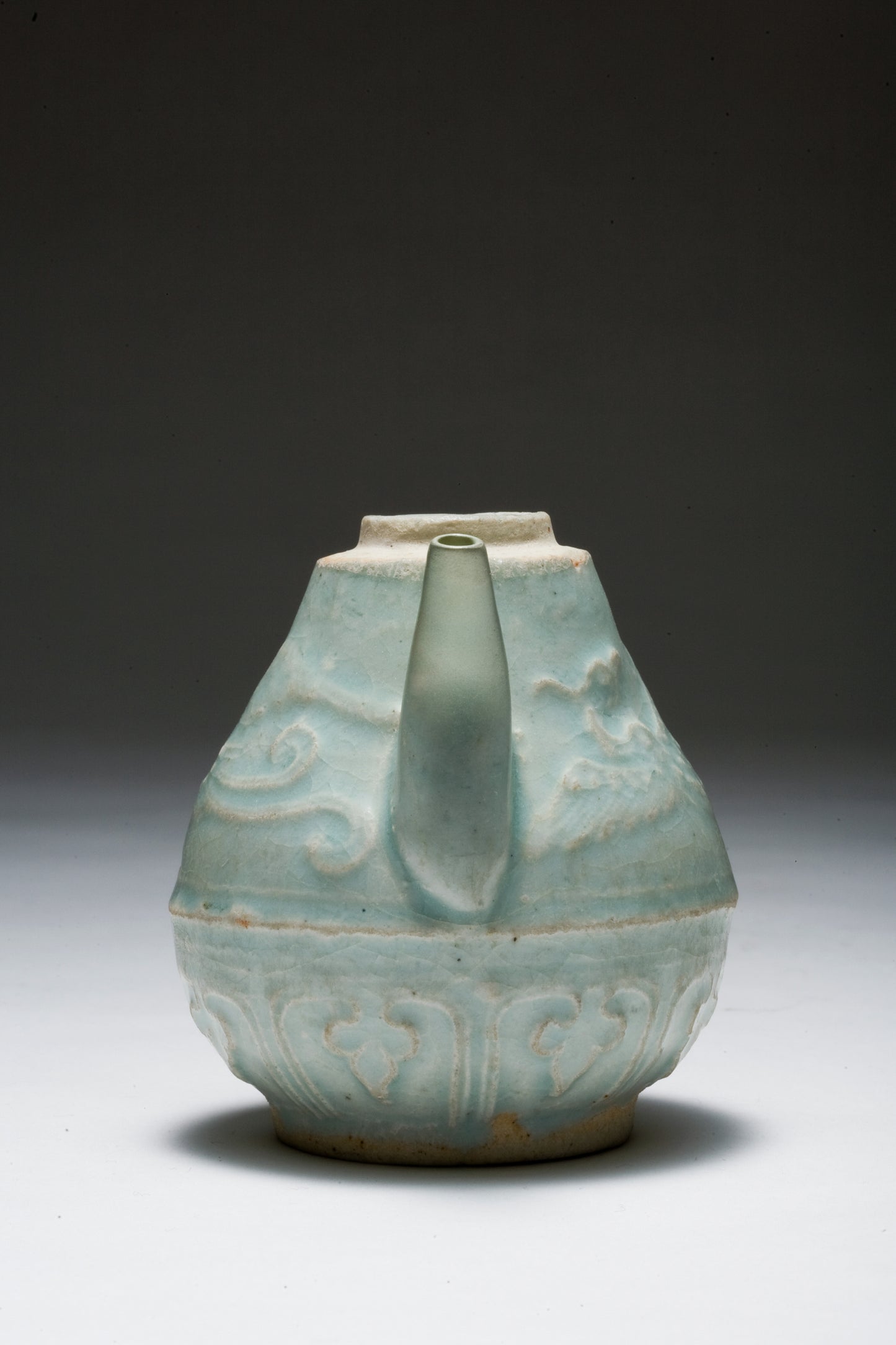AUA Oriental Art
Qingbai ewer with slip decoration of two phoenix and lotus leaves, Yuan Dynasty, 14th century
Qingbai ewer with slip decoration of two phoenix and lotus leaves, Yuan Dynasty, 14th century
Couldn't load pickup availability
This small ewer is an exquisite example of Qingbai ware, known for its pale blue-tinged glaze. The vessel showcases the advanced ceramic techniques and artistic sophistication of the era. Its delicate form is enhanced by relief decorations depicting two phoenixes amidst lotus leaves, motifs rich in cultural and symbolic significance.
The body of the ewer tapers gently toward the base and is balanced by an elegantly curved spout and handle, the latter of which is finished with a slight twist typical of Yuan dynasty style. The relief decoration employs a technique that adds depth and texture to the surface, highlighting the craftsmanship of Yuan potters.
The phoenix, a mythical bird revered in Chinese tradition, symbolizes longevity and prosperity and is often associated with virtue and grace. The lotus leaves accompanying the phoenixes are emblematic of purity and enlightenment, echoing Buddhist teachings. The interplay of these symbols on the ewer suggests that it was more than a mere utilitarian object; it was imbued with cultural resonance and spiritual depth.
Type : Small Ewer
Medium : Qingbai Ware
Size : 9.0 cm(Height), 4cm(Diameter)
Provenance : Acquired in 1999, Hongkong
Reference : Art Gallery of NSW(Museum), Australia
https://www.artgallery.nsw.gov.au/collection/works/231.1998/
* Qingbai Ware
Qingbai ware, which translates to "blue-white ware," is a type of Chinese porcelain that was made at the Jingdezhen and other kilns in the porcelain-producing regions of China, primarily during the Song dynasty (960–1279) and continuing into the Yuan dynasty (1271–1368). It is known for its translucent quality and the pale blue-green glaze that characterizes most of its pieces.
The qingbai glaze was achieved using a small amount of iron in a reduction-fired atmosphere, which produced the subtle blue-green tint. The body of qingbai ware is typically made of a fine, white porcelain that is often referred to as 'artificial jade' due to its resemblance to the esteemed stone. The thinness of the body and the high firing temperatures used contributed to the translucent quality of the finished product.
Qingbai ware includes a range of items such as bowls, cups, vases, and ewers. The designs are usually simple and elegant, with an emphasis on the graceful lines and form of the objects. Decorative motifs, when present, are often incised, carved, or molded in relief and can include floral patterns, dragons, phoenixes, and other symbolic elements drawn from Chinese culture.
Over time, the technology and techniques used to produce qingbai ware evolved, leading to innovations in glaze and decoration that would influence later types of Chinese porcelain. Despite these changes, qingbai ware remains a distinguished example of the potters' art in Song and Yuan China, reflecting the refined aesthetic and cultural values of the period.
Share










